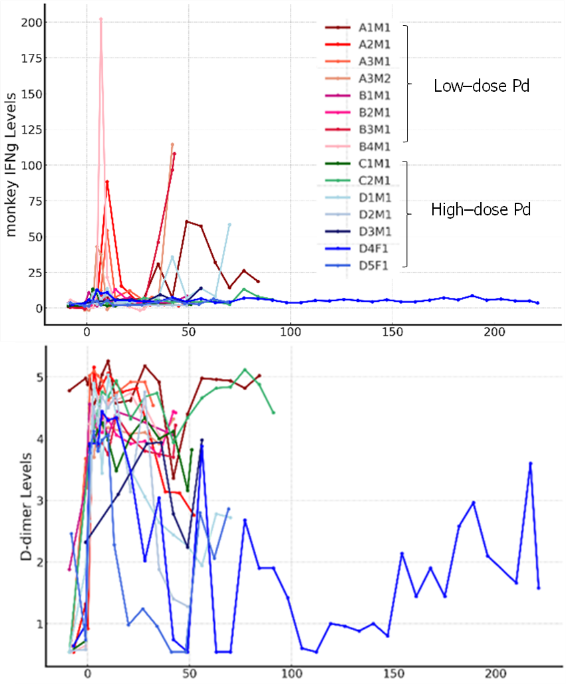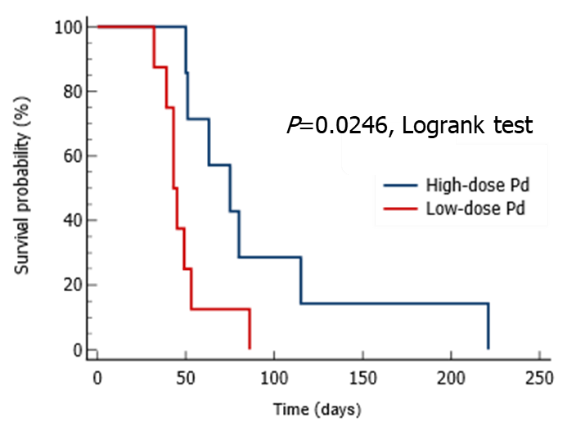Effect of high-dose steroid therapy on graft survival and inflammatory markers in nonhuman primate recipients of genetically modified porcine kidney xenografts
Hee Jung Kang1, Eun Mi Park1, Haneulnari Lee1, Keon Bong Oh2, Jeong Ho Hwang3, Joohyun Shim4, Hyunil Kim4, Ik-Jin Yun5.
1Laboratory Medicine, Hallym University College of Medicine, Anyang, Korea; 2Animal Biotechnology Division, National Institute of Animal Science, Wanju-gun, Korea; 3Animal Model Research Group, Korea Institute of Toxicology, Jeongeup, Korea; 4Department of Transgenic Animal Research, Optipharm Inc., Cheongju, Korea; 5Surgery, Konkuk University School of Medicine, Seoul, Korea
Introduction: Since the hyperacute rejection in xenotransplantation was overcome by using alpha-1,3-galactosyltransferase gene knockout (GTKO) pigs as donors, porcine kidneys from pigs with further genetic modifications have been transplanted in nonhuman primate (NHP) recipients, of which the results have varied widely. Commonly observed in rejected porcine kidneys are thrombotic microangiopathy and microvascular inflammation characterized by endothelial cell activation, yet the precise mechanisms of graft failure remain unclear. Previously, we noted an early increase in interferon-gamma (IFNg) in the circulation of NHP recipients of xenotransplantation, which can initiate subsequent inflammatory responses in endothelial cells. Glucocorticoids is well known to suppress proinflammatory downstream signaling of IFNg. In this study, we explored whether a high dose of steroid therapy could mitigate vascular inflammation and extend the survival of the xenografts in NHP recipients.
Methods: We transplanted kidneys from GTKO pigs with additional genetic modifications into cynomolgus monkeys (n=15). The monkeys received a regimen of anti-CD154, rituximab, anti-thymocyte globulin, rapamycin (or tacrolimus), mycophenolate mofetil, and methylprednisolone (Pd) before and after transplantation. Pd was administered at either 4 mg/kg/d (low-dose, n=8) or 10 mg/kg/d (high-dose, n=7) and tapered over 5 weeks. Blood samples were taken at regular intervals until graft failure to measure D-dimer, inflammatory cytokines, anti-pig cell IgG and IgM antibodies, and to compare these markers with graft survival across the different Pd dosage groups.
Results: D-dimer levels were initially high post-transplantation, decreased gradually, and then increased again at graft rejection. The time-weighted average median level of D-dimer was significantly lower in the high-dose Pd group compared to the low-dose group (2.87 vs 4.00 u/ml, P=0.0140). Regarding IFNg, an early post-transplant elevation was observed in the low-dose Pd group within the first 1-2 weeks but not seen in the high-dose group. The time-weighted average median level of IFNg was also lower in high-dose pd group compared to low-dose group (2.62 vs 10.13 pg/ml, P=0.0140). No differences were observed in the levels of other measured cytokines or antibodies. The median survival of porcine kidney xenografts was significantly prolonged in the high-dose group compared to the low-dose group (75 days vs 43 days, P=0.0246).


This work was carried out with the support of the “Cooperative Research Program for Agriculture Science and Technology Development [Project No. PJ015607], Rural Development Administration, Republic of Korea. This research was partly supported by Hallym University Research Fund.
[1] Graft survival
[2] Pig kidney
[3] Interferon-gamma
[4] D-dimer
[5] High-dose steroid therapy
[6] Nonhuman primate